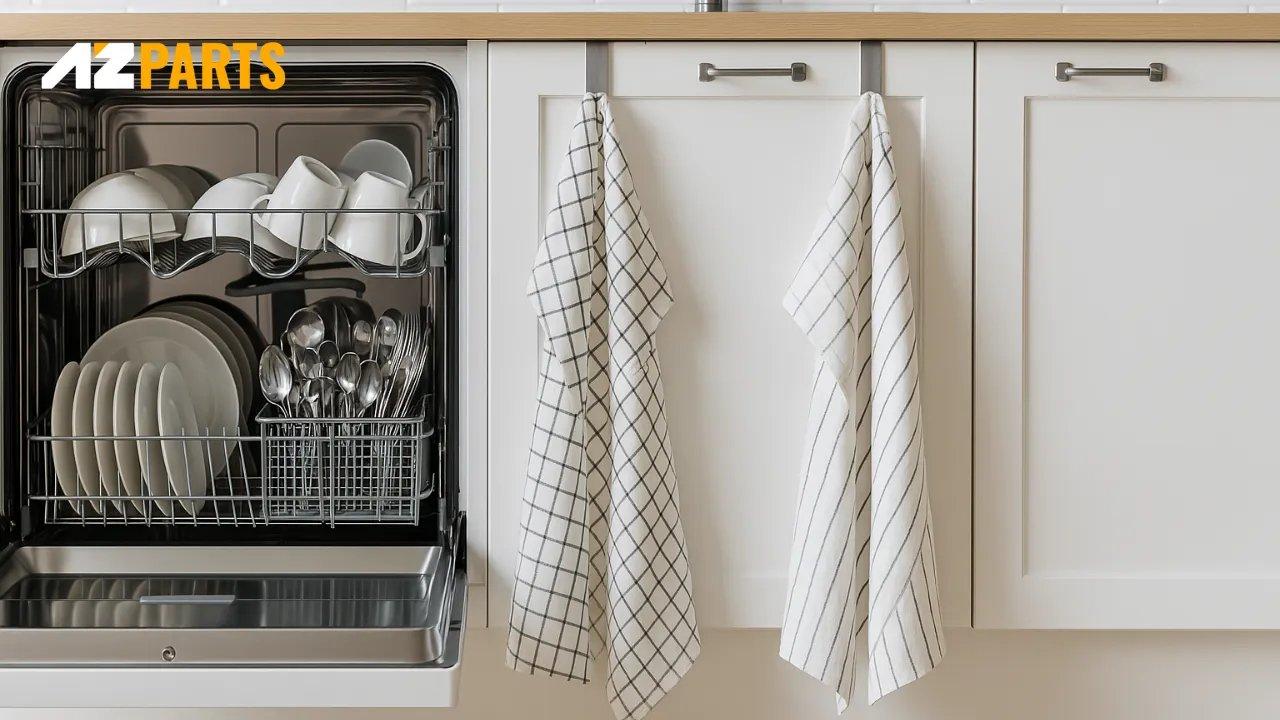Repair help
How to Reset a Dishwasher Won't Start?
AZparts Team
Updated on July 25, 2025
7 min read
It's incredibly disruptive when your dishwasher, usually such a workhorse, suddenly refuses to cooperate. When your dishwasher won't start, it leaves you facing a pile of dirty dishes and a perplexing mystery. Luckily, you don't have to tackle this alone. In this article, AZParts will provide clear guidance and the necessary parts to help you effectively diagnose and resolve common starting issues.

1. Why Is My Dishwasher Not Starting?
If your dishwasher won’t start, it doesn’t always mean it’s broken. Often, the issue comes down to a small setting, a minor hardware problem, or a disconnected power or water source. Before calling a technician, try these common troubleshooting steps to get your dishwasher running again.
1.1. Control Lock Is Set
Most modern dishwashers have a control lock feature to prevent accidental use or changes to the cycle. When this is activated, the dishwasher may not respond to button presses, and you might see a flashing lock indicator.
How to fix: Press and hold the Lock or Control Lock button for 3–5 seconds until the indicator light turns off. If you're unsure which button to hold, refer to your user manual for guidance specific to your model.
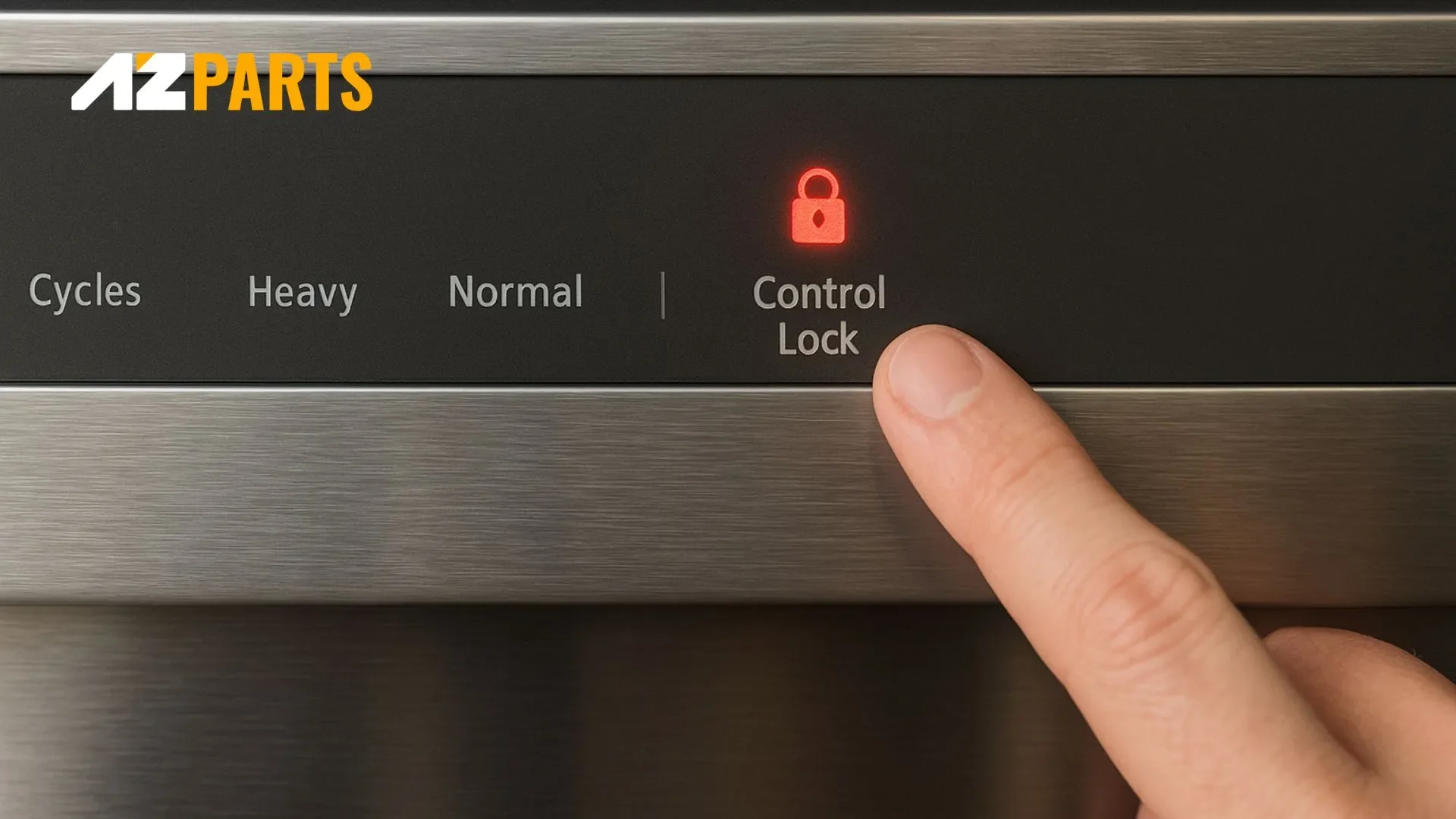
1.2. Sleep Mode Is Activated
Some dishwashers enter sleep mode (or standby mode) when they haven't been used for a while. In this state, the control panel may appear inactive.
How to fix: Open and close the door to wake the machine. You can also try pressing Start/Resume or Cancel to reactivate the panel.
1.3. Delay Wash Option Is On
If you’ve accidentally selected the Delay Wash option, your dishwasher will wait a set number of hours before starting the cycle. This can easily be mistaken for a malfunction.
How to fix: Check the control panel for a delay indicator light or a countdown timer. If the Delay Wash option is active, press the Delay button again to cancel the scheduled start. Then, press Start/Resume within 30 seconds to begin the wash cycle immediately.
1.4. Door Is Not Latched Properly
Dishwashers will not run unless the door is completely closed and securely latched. Even if the door appears shut, it may not be making the proper contact due to rack misalignment or a worn-out latch.
How to fix: Make sure the bottom rack is properly aligned and not preventing the door from closing fully. Push the door firmly until you hear a clear click, which indicates that it’s securely latched. If the door still doesn’t latch or feels loose, the dishwasher door latch mechanism may be damaged or worn and will need to be replaced.
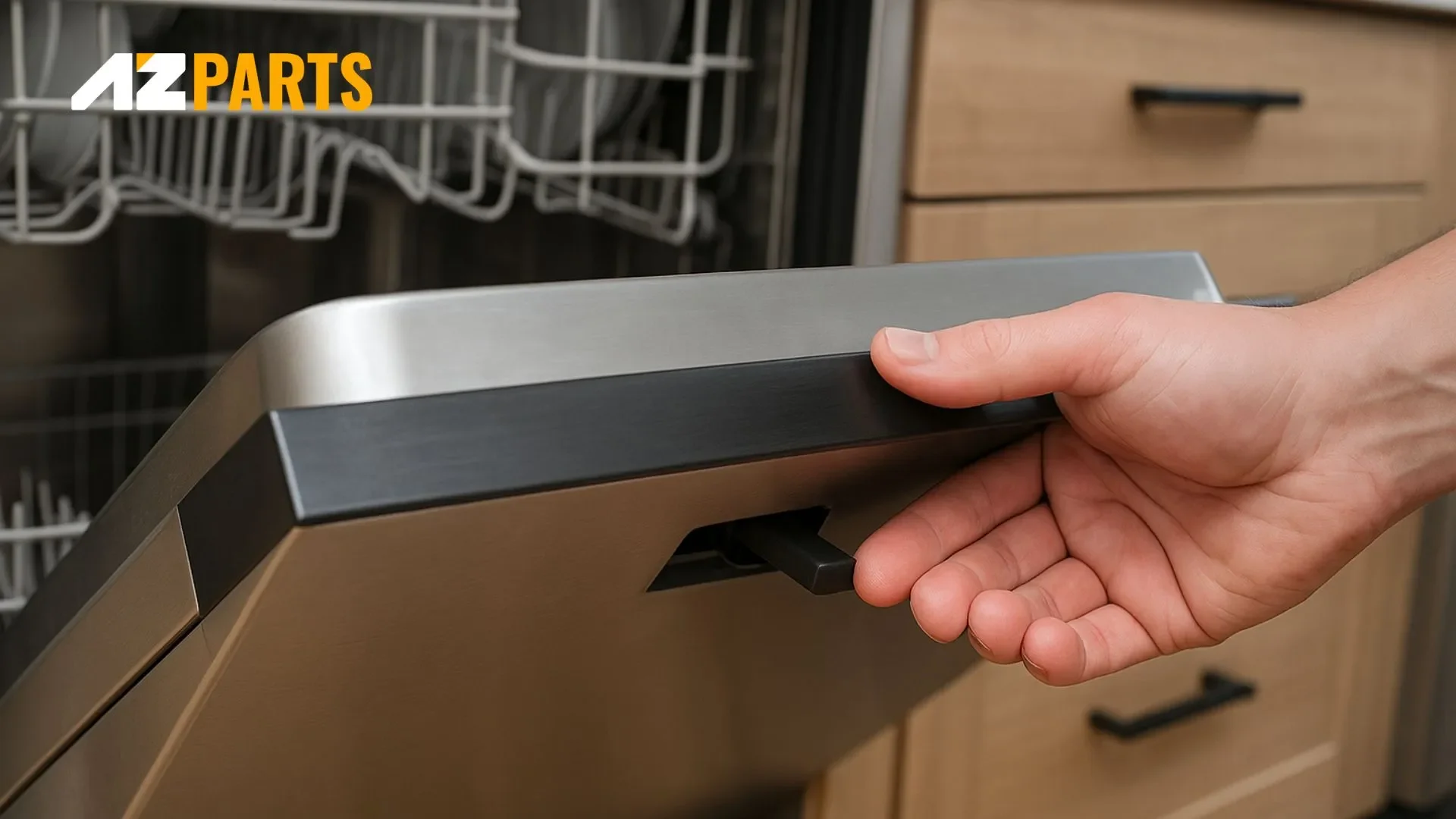
1.5. Power Supply Is Disconnected
Dishwashers are usually hardwired into your home’s electrical system, but a tripped circuit breaker or loose wire can prevent it from starting.
How to fix: Locate your home’s electrical panel and find the breaker switch labeled "Dishwasher" or "Kitchen." Flip the breaker to the off position, wait about 10 seconds, and then switch it back on to reset the power. If your dishwasher is plugged into a standard outlet instead of being hardwired, check under the sink to ensure the plug is fully inserted into the outlet.
1.6. Water Supply Is Turned Off
Your dishwasher won’t start if it doesn’t have access to water. A closed water inlet valve is a common and easily overlooked issue.
How to fix: Look under your kitchen sink and locate the metal water supply line that connects to your dishwasher. Follow the line to find the shut-off valve, which is typically a round knob or a lever. Turn the valve counterclockwise until it is fully open to ensure freedom to the dishwasher.
Bonus Tip: Keep Up with Maintenance
- Clean the dishwasher filter regularly: The filter traps food particles and debris. If it becomes clogged, it can reduce cleaning performance or cause water drainage issues. Clean it at least once a month by removing it (usually located at the bottom of the tub), rinsing it under warm water, and gently scrubbing with a soft brush if needed.
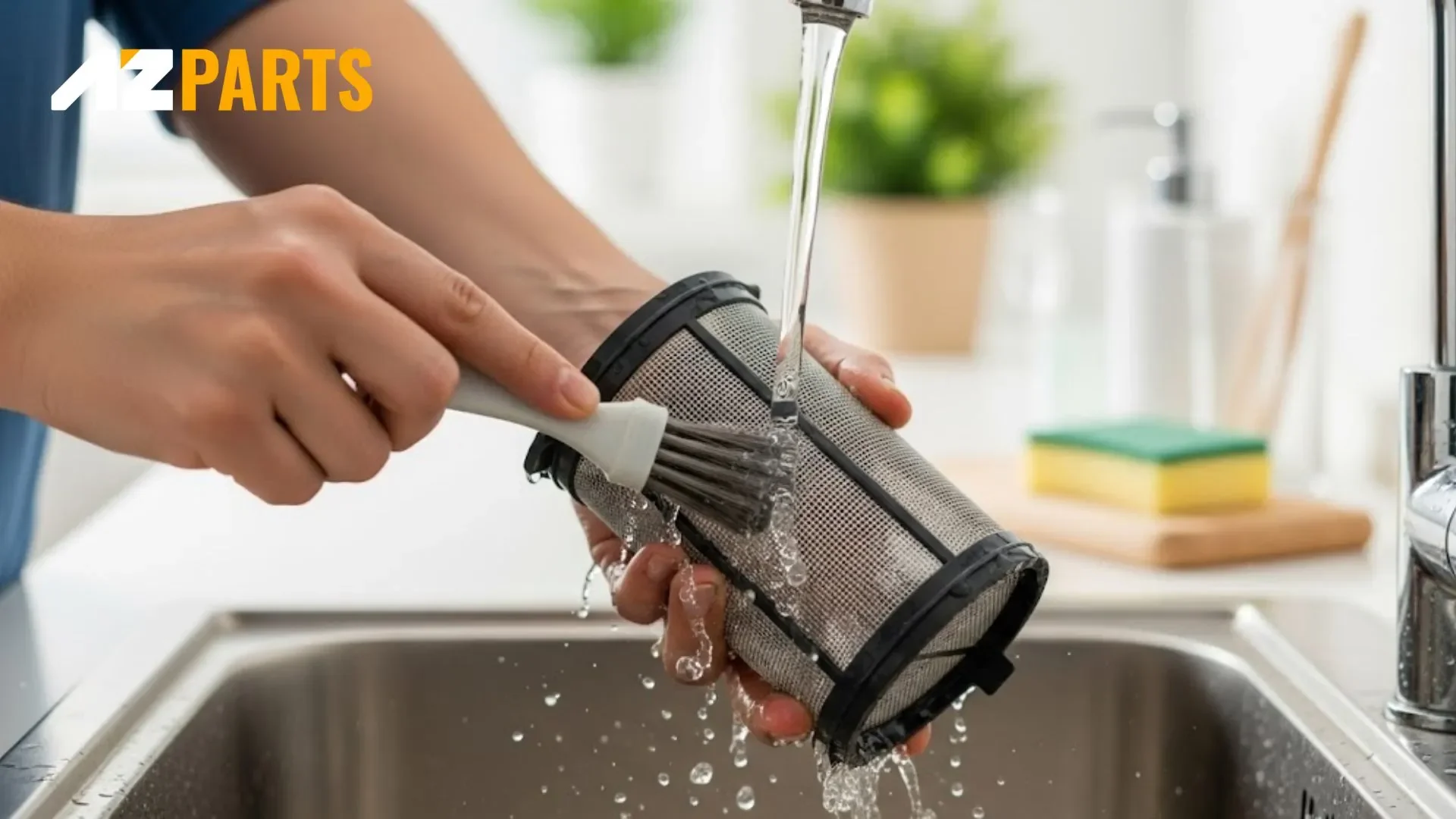
- Inspect the dishwasher spray arms and drain: Check the spray arms for mineral buildup or food debris blocking the spray holes. Remove and rinse them if necessary. Also, examine the drain area for obstructions that might prevent water from exiting properly.
- Follow your user manual’s care instructions: Each dishwasher model has specific maintenance recommendations, including cleaning cycles, detergent types, and loading instructions. Refer to the manual to follow best practices and avoid unnecessary wear or damage over time.
2. How to Reset or Do a Hard Reset on a Dishwasher
If your dishwasher won’t start or isn’t responding as expected, performing a reset also known as a hard reset can help clear glitches in the system. The reset process may vary depending on the brand and whether the unit is hardwired or plugged into an outlet.
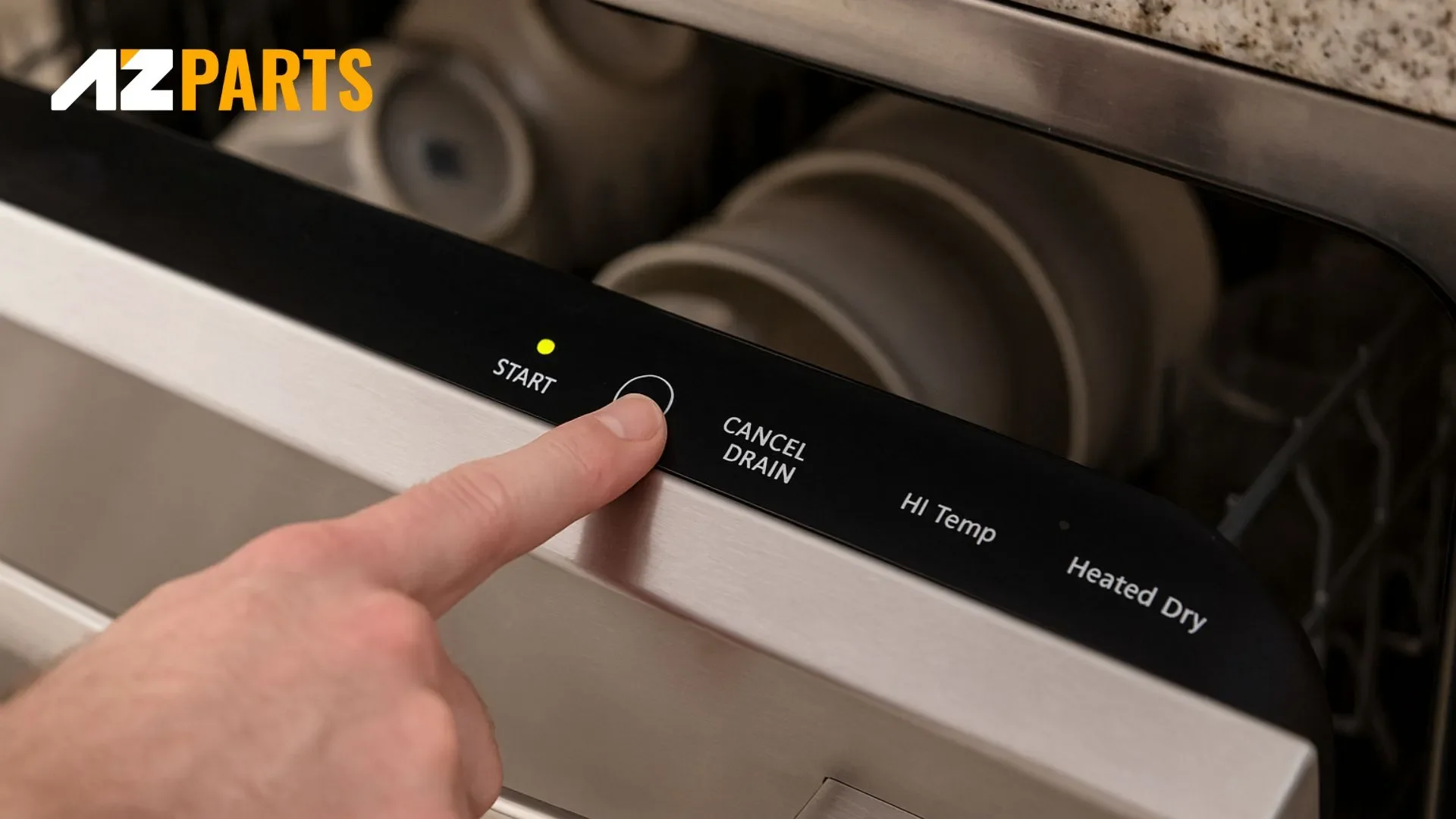
How to reset your dishwasher:
- For models with a Reset or Start/Reset button: Press and hold the Start/Reset button on the control panel for 3–5 seconds. The display may flash or beep to indicate the reset is in progress. Wait a few minutes, then try starting a new cycle.
- For hardwired dishwashers: Go to your home’s electrical panel and locate the breaker labeled for the dishwasher. Flip the breaker to the OFF position, wait 60 seconds, then switch it back to ON.
- For plug-in dishwashers: Unplug the dishwasher from the wall outlet, wait at least one minute, then plug it back in.
Resetting helps resolve temporary control board issues, and it's a simple first step before seeking professional repairs.
3. When to Call a Professional HVAC?
Before picking up the phone to schedule a repair, there are still a few practical steps you can take on your own. Many dishwashers that won’t start are simply dealing with a faulty latch, a loose wire, or a minor component failure which things you may be able to fix yourself.
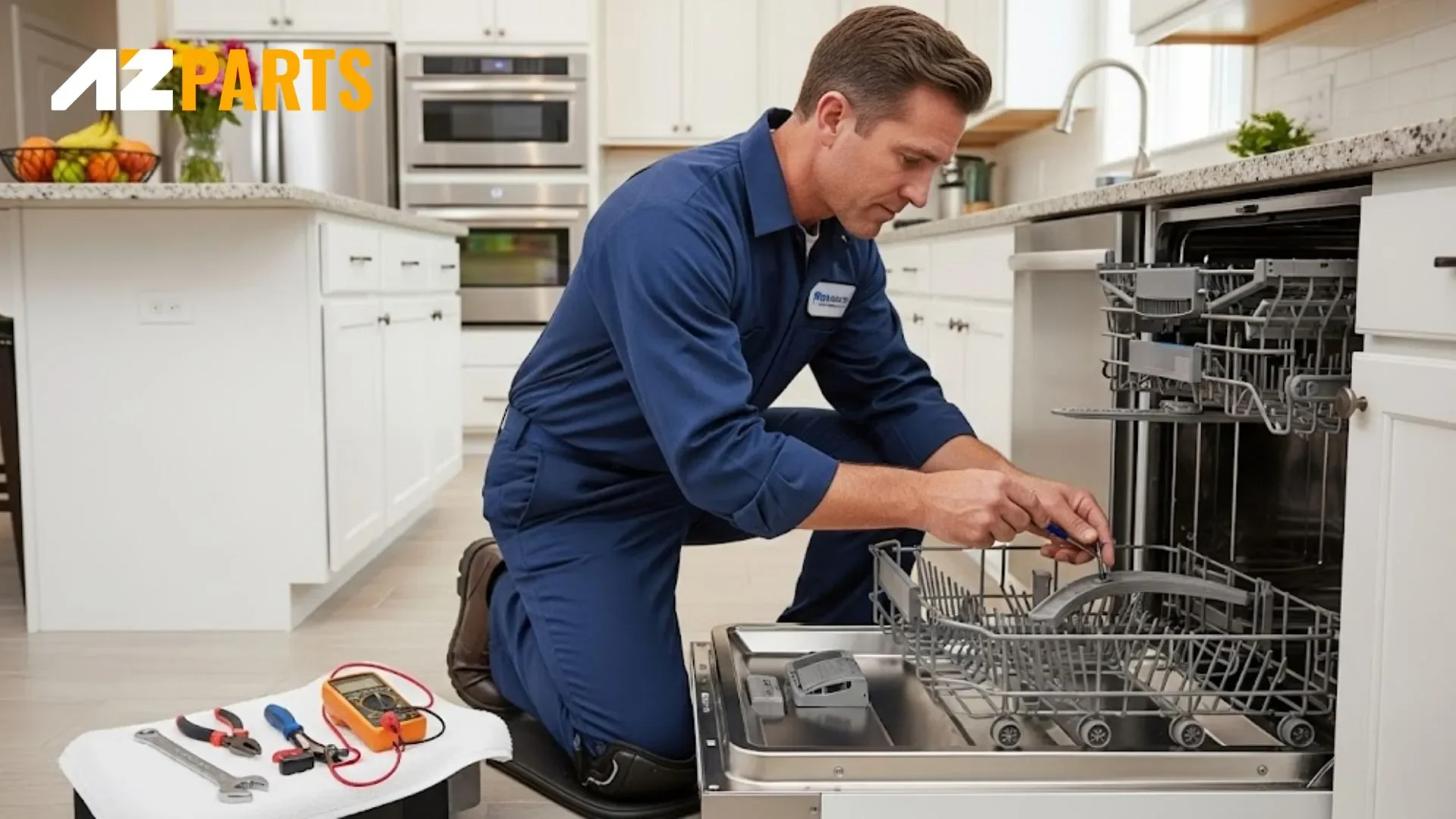
Try this before calling a technician:
- Replace a faulty door latch: A dishwasher can’t run if the door doesn’t securely latch. If you’ve already checked the alignment of the racks and the door still won’t click into place, the latch may be broken..
- Check the breaker and power cord: Visit your home’s electrical panel and flip the dishwasher breaker off, wait 10 seconds, then switch it back on. If your dishwasher plugs into an outlet, make sure the plug is fully inserted and not damaged.
- Inspect for visual damage: Look for burned marks on wiring, melted connectors, or corrosion. These may indicate a larger electrical issue, but catching them early can prevent further damage.
Call a professional when:
- The dishwasher still shows no signs of life: If you’ve replaced the door latch, confirmed the power supply, and reset the unit but it still doesn’t respond at all. You may be dealing with a failed control board, drive motor, or internal fuse. These components require specialized testing and should be handled by a certified technician.
- Lights flash, but nothing happens: Flashing lights with no cycle start often indicate a communication error between the control panel and internal parts. This could point to a faulty control board or sensor malfunction that needs diagnostic tools to confirm.
- Unusual noises are coming from the unit: Buzzing, grinding, or high-pitched whining sounds could suggest a seized motor, jammed pump, or debris stuck in the impeller. Running the dishwasher in this condition can cause further internal damage, so it’s best to turn off power and seek help.
- Water won’t fill or drain properly: If the machine isn’t filling with water or leaves dirty water behind, despite the inlet valve being open and filters clean. The issue might be with the float switch, drain pump, or even the water inlet valve. These parts often require electrical testing or full replacement.
- You’re not comfortable working with electricity or tools: Safety should always come first. If you're unsure how to proceed or don’t have the tools to safely disassemble and test components, don’t risk further damage. A professional technician has the right equipment and experience to identify the root cause and fix it safely.
Dealing with a dishwasher won’t start a situation can be frustrating, but most causes like a tripped breaker or a broken latch are easy to identify. With quick checks and a reset, your appliance may be up and running in no time. If a part needs replacing, turn to AZParts for genuine components and reliable support, so you can get your dishwasher parts working again fast.
Learn more about other dishwasher problems and how to fix them:
Contact Info
Address: 8 The Green, Ste A, Dover, Delaware 19901-3618, United States
Email: support@azparts.com
Dishwasher
Further Reading
Further Reading

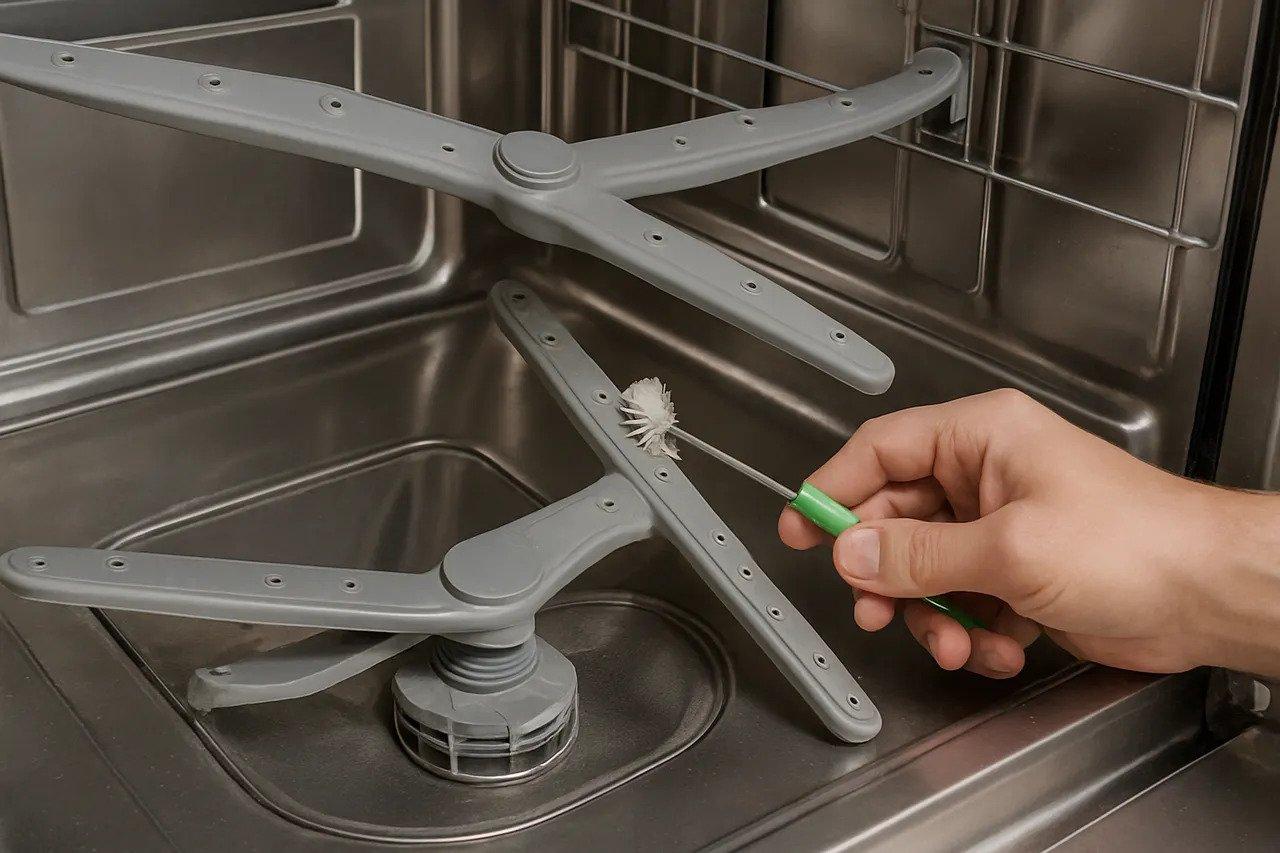

_1748246700.jpg&w=3840&q=75)

